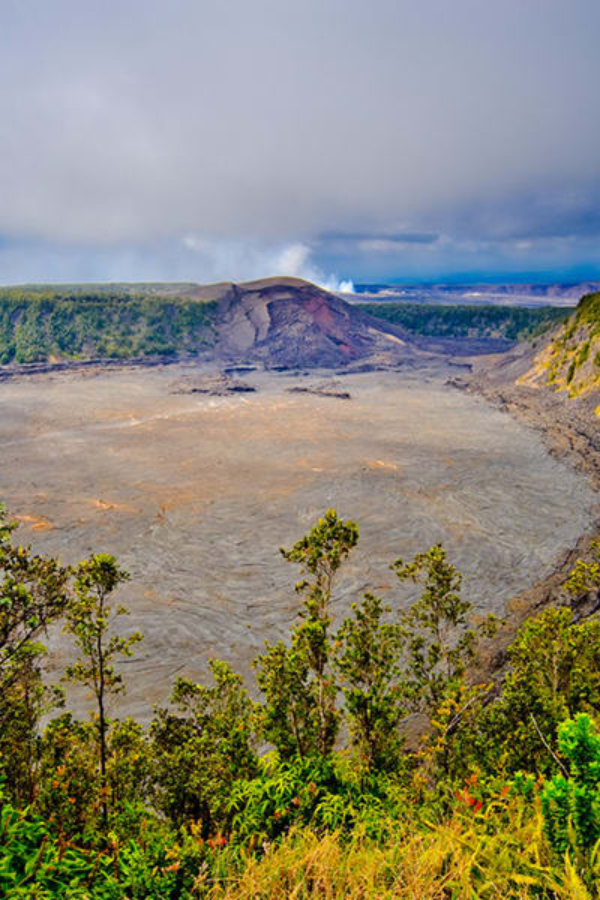Kilauea Volcano, renowned as one of the most active volcanoes on the planet, stands as an important landmark in both Hawaiian culture and natural history. This magnificent natural wonder, deeply rooted in the mythology and traditions of Hawaii, continues to shape the landscape and lives of those around it. In recent years, Kilauea’s eruptions have captured global attention, significantly impacting tourism by offering both challenges and unique opportunities to witness nature’s awe-inspiring power. As it continuously molds the Hawaiian Islands, Kilauea remains a symbol of creation and destruction, inviting adventurers and scholars alike to explore its fiery domain.
Highlights
- Kilauea offers spectacular views of flowing lava, volcanic craters, and unique geological formations, providing an unforgettable backdrop for your adventure.
- The park offers numerous hiking trails, ranging from easy walks to challenging treks, allowing visitors to explore rainforests, deserts, and volcanic craters.
- Experience the awe-inspiring sight of lava flowing into the ocean, creating new land right before your eyes.
- Take advantage of the educational resources available at the Kilauea Visitor Center and the Jaggar Museum.
- After sunset, the lack of light pollution allows for breathtaking views of the stars, planets, and the Milky Way, adding a tranquil end to an adventurous day.
History and Facts
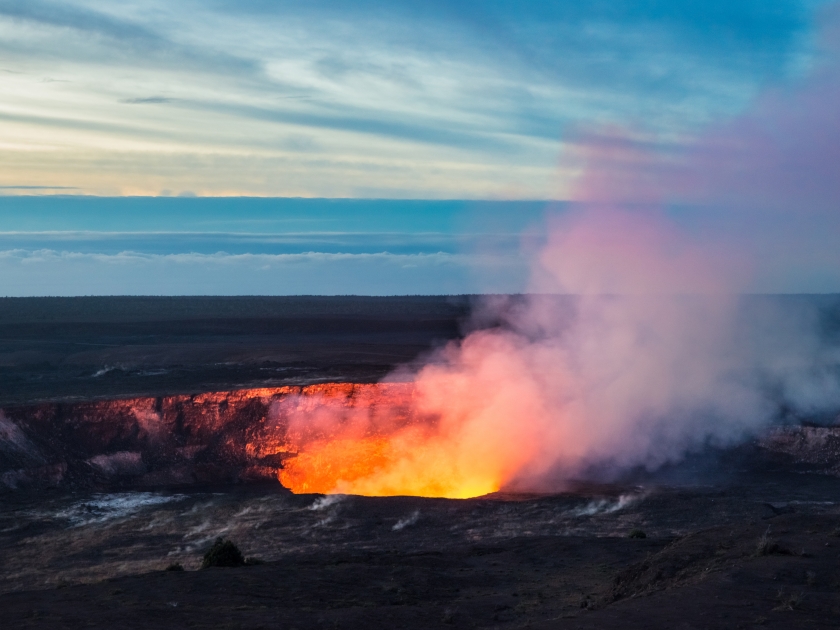
From Ancient Bedrock to Explosive Might
Kilauea’s journey began about 100,000 years ago, originating from a potent underwater hotspot. This fiery behemoth made its grand entrance above the ocean surface, embarking on a vigorous period of explosive eruptions that lasted for its initial 300 years. This era was marked by the volcano’s intense outbursts, which deposited thick layers of ash across the emerging landscape, crafting the foundation of today’s geological wonders.
The Era of Effusive Eruptions
Transitioning from its explosive youth, Kilauea adopted a gentler demeanor. The volcano became renowned for its effusive eruptions, a hallmark of its character, where fluid lava flows elegantly and steadily builds the Hawaiian archipelago. This shift in behavior began in the 1700s, predating European contact, and continued through the centuries, sculpting the land with its fiery touch.
Documented Activity and Increasing Vigilance
The recorded history of Kilauea’s eruptions adds layers of intrigue to its storied past. In 1823, the volcano’s activities were documented by Europeans for the first time during the Keaīwa eruption along the Southwest Rift Zone. Subsequent eruptions in 1868, and notably in 1919-1920 and the 1970s, further highlighted Kilauea’s restless nature. These events, primarily focused on the Southwest Rift Zone, underscored the volcano’s unpredictable temperament.
A New Phase of Constant Activity
1983 marked a pivotal year for Kilauea, ushering in an era of near-constant eruptions along its eastern rift zone. This period was characterized by the creation of a persistent lava lake within the caldera, captivating visitors and researchers alike with its mesmerizing glow and activity. This constant state of eruption became a defining feature of Kilauea, symbolizing its enduring vitality and its role as a key attraction for those drawn to its primordial beauty.
Recent Quiet and Future Possibilities
The landscape of Kilauea’s activity underwent a significant transformation in 2018. The long-standing Puʻu ʻŌʻō eruption came to a halt, and the summit caldera collapsed, signaling a decrease in surface activity. However, in the fall of 2023, increased seismic activity hinted at the volcano’s unquenched spirit, reminding us of its potential for future eruptions. As of 2024, Kilauea remains relatively calm, yet the possibility of new eruptions looms on the horizon, a testament to the ever-changing nature of this magnificent volcanic giant.
Things to Do
Experience the Fiery Heart of Hawaii with Lava Tours
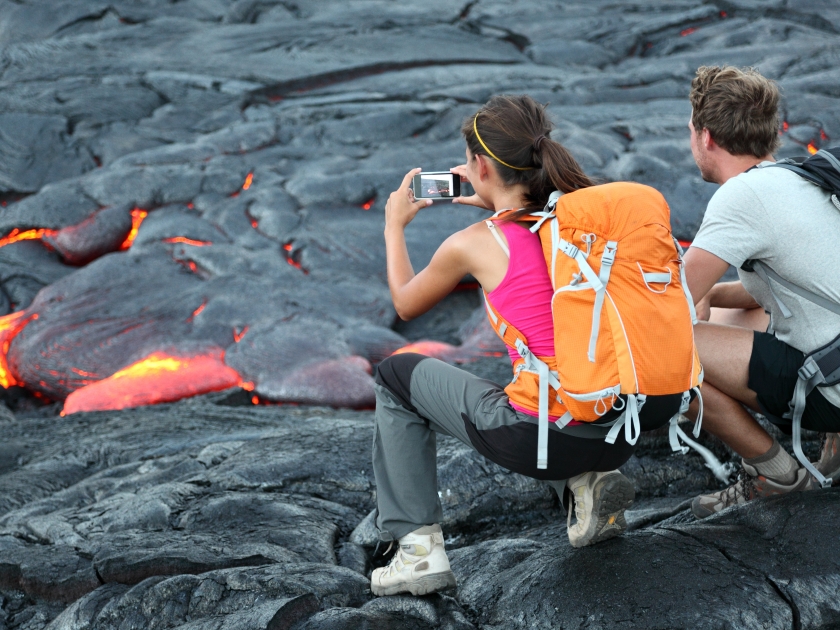
Embark on a mesmerizing journey to witness the earth’s raw power with a guided lava tour at Kilauea Volcano. These tours offer an up-close view of the molten lava as it flows from the earth, creating new land in its wake. Expect to walk on solidified lava fields, feel the heat emanating from the ground, and see the glow of lava under the night sky. Booking in advance is recommended, especially during peak eruption periods. Wear sturdy hiking boots, bring plenty of water, and follow your guide’s safety instructions for an unforgettable experience.
Soar Above the Clouds with Helicopter Rides Over Kilauea
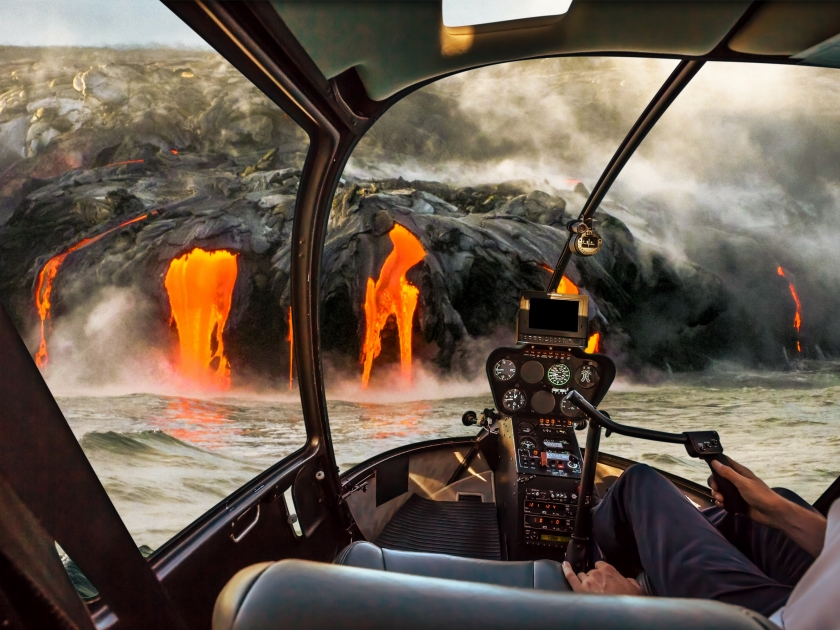
Gain a bird’s-eye view of Kilauea’s majesty with a helicopter tour, offering unparalleled perspectives of the volcano’s craters, lava flows, and the vast landscape affected by its eruptions. These rides provide a safe, exhilarating way to appreciate the scale and beauty of the volcanic activity without the need to hike. When booking, look for operators with experienced pilots and solid safety records. Don’t forget your camera, as these rides offer some of the most breathtaking photo opportunities of Kilauea and its surroundings.
Trek the Trails of Kilauea for a Journey Through Volcanic Wonders
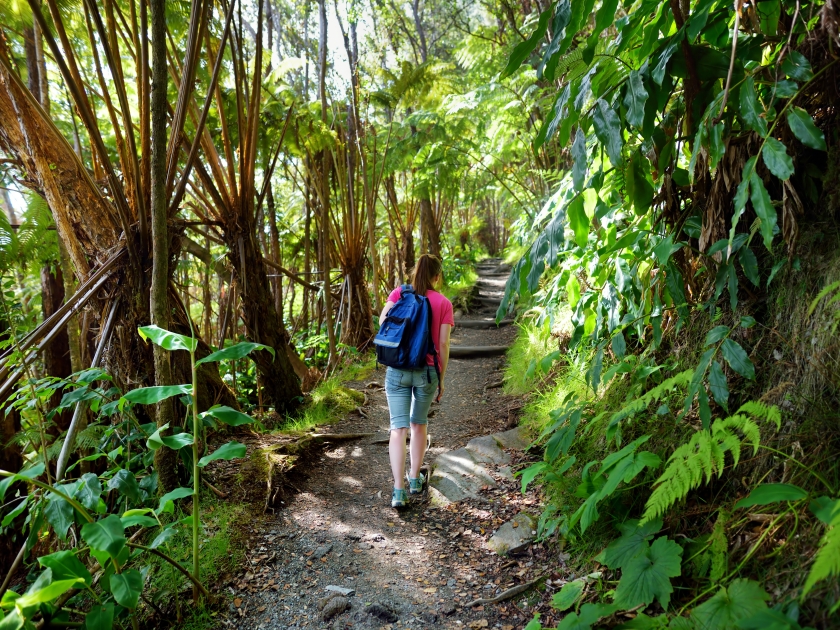
Hiking Kilauea’s trails immerses you in the diverse ecosystems and geological formations shaped by centuries of volcanic activity. From easy walks to challenging treks, the trails offer something for every level of adventurer. The Devastation Trail and Crater Rim Trail are popular choices, providing views of craters, steam vents, and the dynamic landscape. Always check trail conditions before setting out, wear appropriate gear, and carry sufficient water and snacks. Remember, staying on marked trails is crucial for your safety and the preservation of the area.
Discover Kilauea's Secrets with Park Ranger Programs
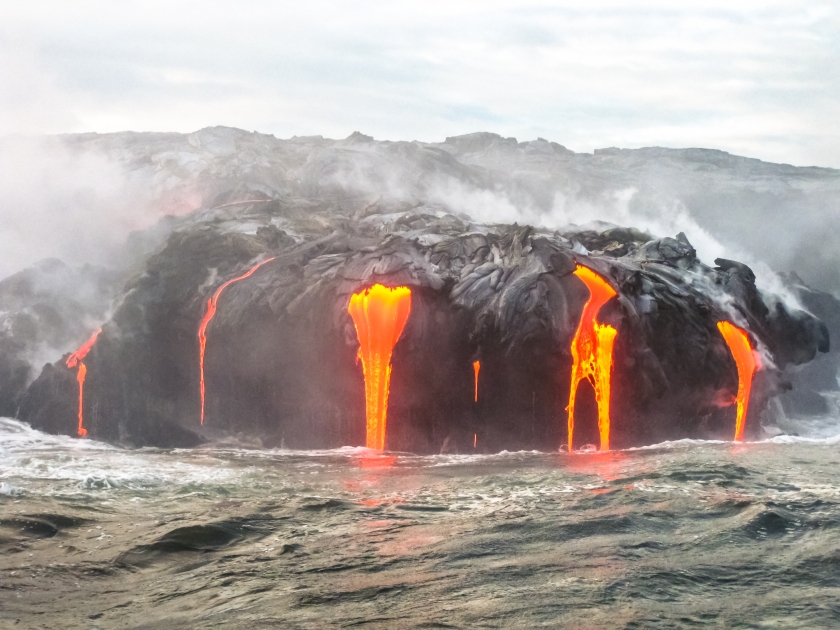
Participating in park ranger-led programs is an enriching way to learn about Kilauea’s geology, ecology, and cultural significance. These programs often include guided hikes, educational talks, and junior ranger activities for children, making it a fantastic option for families. Rangers share insights into the volcano’s history, recent eruptions, and ongoing research and conservation efforts. These programs are usually free with park admission, but some may require reservations. Dress appropriately for the weather and terrain, and be ready to ask questions and discover the wonders of Kilauea Volcano.
See More: Top Ways to See Kilauea Volcano
Safety Guidelines and Environmental Awareness
- Stay within designated areas: Always adhere to marked paths and viewing spots to ensure personal safety and avoid hazardous areas.
- Respect nature: Do not disturb the natural landscape, wildlife, or plant life. Leave everything as you find it to preserve the environment.
- Carry out trash: Practice “Leave No Trace” principles by removing all garbage to prevent pollution and harm to wildlife.
- Stick to marked trails: This minimizes soil erosion and protects native vegetation.
- Use eco-friendly products: Opt for biodegradable and environmentally friendly sunscreens, insect repellents, and other products to reduce chemical impact.
- Follow park regulations: Abide by all park rules, including those related to camping, fires, and restricted areas to ensure the protection of natural resources.
- Participate in educational programs: Engage with park ranger-led talks or tours to deepen your understanding of Kilauea’s ecosystem and volcanic activity.
- Support conservation efforts: Consider contributing to local conservation projects or volunteer programs to help maintain the area for future visitors.
Accommodations and Facilities Near Volcanic Zones
Near the heart of volcanic activity, Volcano House offers unmatched views, allowing guests to stay on the rim of the Kilauea caldera. For a closer touch with nature, camping options at Namakanipaio Campground provide a rustic yet beautiful setting under the stars. Nearby, the Volcano Village is home to charming bed and breakfasts, offering cozy retreats amid lush surroundings. Essential amenities, including the Kilauea Visitor Center, provide insightful exhibitions and guidance for your adventures. Dining options range from local cafes in Volcano Village, offering fresh Hawaiian cuisine, to the dining experiences at Volcano House, where you can savor meals with a view of the crater. Whether seeking the comfort of a hotel, the tranquility of a campground, or the charm of a B&B, the area around Kilauea caters to all preferences, ensuring your volcanic adventure is both comfortable and memorable.
Photography and Best Viewing Spots

Capturing the majestic essence of Kilauea Volcano requires knowing the prime spots and the right moments. The Jaggar Museum Overlook offers panoramic views of the Halema‘uma‘u Crater, especially enchanting at dusk when the lava’s glow contrasts starkly against the darkening sky. For a unique perspective, the Kalapana viewing area provides an exceptional vantage point of lava flowing into the ocean, creating dramatic steam clouds that are particularly photogenic at sunrise or sunset. Photographers should also explore the Chain of Craters Road, where various pullouts present opportunities for stunning landscapes and the chance to capture the raw beauty of volcanic destruction and creation. Remember, early morning or late afternoon light offers softer hues and longer shadows, adding depth and character to your photos of Kilauea’s diverse landscapes.
Best Times to Visit Kilauea Volcano
Visiting Kilauea Volcano offers a range of experiences depending on the time of year. For those eager to witness the mesmerizing flow of lava, the best times are during active eruption periods, which can occur at any time but are often more visible and accessible during the dryer months of May through October. Hiking enthusiasts may prefer the cooler, less rainy months of April and May or September and October, when trails are more navigable, and the weather is conducive to outdoor activities. Always check the current volcanic activity reports and weather conditions before planning your trip to ensure the best experience.
Entry Requirements, Permits, and Safety Regulations
Access to Kilauea and its surrounding areas is regulated by the Hawaii Volcanoes National Park. Visitors may need to obtain permits for specific activities like camping or entering certain restricted areas. It’s crucial to adhere to all safety regulations provided by the park, including staying out of restricted zones, following designated trails, and heeding warnings about volcanic activity. The park’s website and visitor centers are excellent resources for the latest information on entry requirements and safety guidelines.
Recommended Gear and Preparation Tips for a Safe Visit
A successful visit to Kilauea requires careful preparation and the right gear. Essential items include sturdy hiking boots for navigating rough terrain, water and high-energy snacks for hydration and energy, and layers of clothing to adapt to the varying temperatures. A flashlight or headlamp is a must for exploring lava tubes or if you find yourself out after dark. Don’t forget sun protection, a hat, and sunglasses for the daytime, and consider bringing binoculars for a closer look at distant lava flows. Always pack a first aid kit for emergencies and ensure you have a map and a good understanding of the area you plan to explore.
Frequently Asked Questions (FAQs)
Yes, Kilauea volcano’s activity varies over time. To get the latest eruption status, it’s best to check recent updates from the United States Geological Survey (USGS) or Hawaii Volcanoes National Park websites, as these sources provide real-time information on volcanic activity.
Kilauea volcano is famous for being one of the most active volcanoes on Earth. It’s renowned for its relatively frequent and accessible eruptions, showcasing spectacular lava flows and volcanic landscapes. Its ongoing activity offers unique opportunities for scientific research and attracts visitors from around the world eager to witness volcanic power.
Yes, viewing conditions for lava at Kilauea depend on the volcano’s current activity. During eruptions, visitors may see lava flows or glowing craters from designated viewing areas in Hawaii Volcanoes National Park. Safety regulations apply, and access is subject to volcanic activity and weather conditions.
Kilauea volcano is located in Hawaii Volcanoes National Park on the Big Island of Hawaii, USA. It is part of the Hawaiian-Emperor Seamount chain and sits on the southeastern side of the Big Island, making it a prominent feature of Hawaii’s volcanic landscape.
Kilauea has a history of frequent eruptions. Since the early 1980s, it has been erupting almost continuously, with periods of higher activity interspersed with quieter phases. The pattern of eruptions and the forms they take can vary widely, from explosive events to more common effusive lava flows.
Kilauea is known for producing a variety of lava formations, including pahoehoe (smooth, ropey lava), a’a (rough, jagged blocks), and impressive lava tubes. These formations result from the cooling and solidification of lava flows as they travel across the landscape. The park offers trails and tours that allow visitors to explore these unique volcanic features safely.
How to Get There
By Car
To visit Kilauea Volcano by car, you will typically start from Hilo or Kona on the Big Island of Hawaii. From Hilo, take Highway 11 south for about 30 miles until you reach the entrance to Hawaii Volcanoes National Park, where Kilauea is located. The drive offers breathtaking views and takes approximately 45 minutes. From Kona, the trip is longer, about 2.5 to 3 hours, also via Highway 11, circling the southern part of the island.
By Bus
By bus, the transportation options are more limited and require advanced planning. From Hilo, you can catch the Hele-On bus, which has a route to the Hawaii Volcanoes National Park. The service is infrequent, so it’s essential to check the latest schedule on the Hele-On Bus website. There is no direct bus service from Kona to the park, so travelers coming from Kona may need to arrange for a car rental or join a guided tour that includes transportation.
Explore, Learn, and Marvel at Kilauea Volcano!
The wonders of Kilauea Volcano, from its pulsating lava flows to its rich cultural significance, offer a unique glimpse into the natural world’s power and beauty. This journey into the heart of one of the most active volcanoes on Earth invites a deep respect for the forces of nature and the traditions that surround it. As you plan your visit, remember the importance of adhering to safety guidelines to ensure not only your enjoyment but also your well-being.




